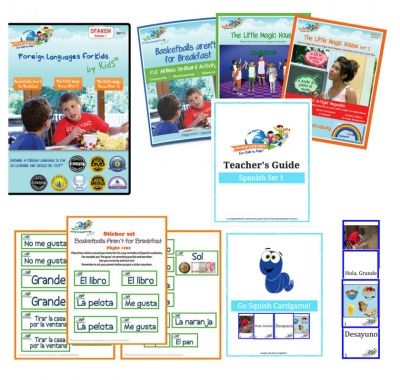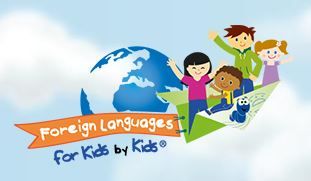Caution: This post contains my rather strong opinion. Proceed with caution.
It happens every fall. Homeschooling mamas and papas second-guess their decision to keep their preschoolers and kindergartners home. Concerned parents lament that their three-year-old preschoolers are not thriving with the expensive curriculum they bought to “do preschool.” Some are certain their four-year-olds are educationally doomed, while others wonder if they should try other curricula or enroll their five-year-olds in a “real” school with “real” teachers and a “real” chalkboard that mama didn’t make with old plywood and chalkboard paint during nap time. Parents groan that if preschool or kindergarten requires this much work, they will never make it through grade school, much less—GASP!—high school!
I don’t like to give advice (bold-faced lie), but I’m going to anyway. Mama…Papa…
Relax!
Please, sweet Mamas and manly, but caring Papas, breathe! Now breathe again. Now go eat chocolate and come back.
Feel better? Good. Now here’s the scoop, and I’m saying it like it is with no apologies. You have been twice warned.
First of all, preschool? What’s that?
Technically, it’s supposed to be getting a child ready for school, thus the prefix “pre-” meaning “before.” Somehow it has morphed into sending a child to school so she can get ready to go to school. It’s like pre-birth. Hey, unborn baby, let’s be born early so you can practice breathing oxygen. Maybe that will make you more ready to breathe when you’re really supposed to be born and start breathing. Prepping for school is what kindergarten used to be for. When I say kindergarten, I mean for six-year-olds, maybe five-year-olds, not three- and four-year-olds. That’s still preschool playing pretend with a more grown-up name. Am I opposed to preschool? No. But where do you draw the line, people?
Second, what’s your rush?
Why does your child have to be reading before anybody else’s child? Why does he have to be doing the big math and reciting what a noun is before, say, my kids? What is the rush? Do you enjoy adding additional stress and frustration to a potentially beautiful life of learning? Will pushing your son beyond his readiness result in an enthusiastic, lifelong learner, or will it frustrate you and your children and create yet another student who is burned out by fourth grade and never cracks another book once he has his diploma stuffed into his back pocket? Ask yourself if you’re doing this for your babies or for yourself and your personal homeschool critics. (Yeah, we all have a peanut gallery of critics.)
Third, you’ve got it all backwards!
Have you noticed the trend in the “better” schools to try and emulate the home environment? That is because the experts are finally realizing that children learn best in a natural setting. Come here, experts, so I can smack you in the forehead. Children learn on Papa’s knee and walking hand in hand with Mama. That’s how they learn to walk, to talk, to eat, to breathe (oh, wait, nobody has to teach them that in pre-birth). That’s how they learn their colors and counting. That’s how they can learn reading and grammar usage and even foreign languages. That is not how they learn calculus. Parents that take the natural learning environment and turn it upside down are recreating the school in the home…the school that is now trying to recreate the home in the school. It’s like if you draw a picture of yourself drawing a picture of yourself drawing a pic—you get it. Yeah, my head is spinning.
Mama, Papa, please, please, please relax.
Please give your child plenty of time to sit on your lap and follow you and learn from you. Please let your little ones play with rocks and colors and follow ants and build forts. Please don’t prioritize your daughter’s workbook-learning over precious life-learning by your side. Please don’t force your active little boy to sit with a pencil in hand in a chair for two hours a day while you pull your hair out because he can’t write his name. Who cares?! When he’s older, he’ll write his name! Simple as that! Please enjoy these precious early years without squeezing your family into an educational box that someone only recently created and announced as good. It’s not good. It’s just a box. Outside of the box is life!
Some of you are saying, “But my daughter loves workbooks!”
So give her workbooks! Do what works. But if your four-year-old could be in the kitchen cooking with you or planting her own garden, and you’re forcing her to sit at a table writing “Aa” 25 times instead, in my opinion, something’s wrong. If your six-year-old son wants to replicate the four-mile Astoria Bridge out of Legos or “help” Papa change a tire and you’re making him do three pages of addition first, in my opinion, something’s amiss. In my opinion, it’s complicating life to force a small child to do “table work” for 45 minutes, when you could instead wait until he is developmentally ready, teach the same information in five easy minutes, save frustration and tears, and not rob the child of the joy of learning. Not to mention, you can redirect those hours of lesson-planning for your children into time spent with your children. That right there is why I had children, to spend time with them, not plot out a life for them.
Now you say, “But kids need to learn to do hard things they might not want to do, like writing and adding.”
True. But there are other hard things they need to learn that they may be more prepared to tackle at this point in their development, things like saying please and thank you and brushing their teeth and picking up toys and not throwing balls in the house and not cutting their own hair and not tattooing Mama’s legs with permanent marker if she falls asleep during reading time. Things like obedience and patience and sharing and helping siblings and not bullying. Things like chivalry and sitting quietly in church and the lesson 85% of adults still need to learn–the world is round, but you’re not the center. Why make it harder?
Of course, this in no way means that you can leave your child to his or her own pursuits, assuming learning will come naturally. It will come naturally, but it may not be the learning you seek for your little ones. It’s up to you to create a rich learning environment and an atmosphere that makes learning happen naturally.
How do you do that? Good question!
Click here to read 18 of my simple curriculum-free, stress-free, guilt-free, fun-full, family-full, life-full approaches to the preschool and kindergarten years. Buckle your seatbelts, cuz you’ll be the fun parent climbing on the roof dropping eggs on the sidewalk instead of the parent reading about gravity in a book. Yup…that parent!
Oh, I know you all have one last question; “Did your kids ever learn to read with a Mama with this mentality?” Excellent question, Watson. Indeed, they did. One of my children could identify letters before turning two. Two sounded out short words at three. They all start reading aloud in family Bible time around six or seven…but it wasn’t always pretty. Are they naturals? Some, but not all. My son could sound out basic words, but really struggled with phonics and sight words at age five, so we shelved the phonics book. Every few months I would work with him again to test his readiness. Finally at six-and-some-months, BANG! He got it like he gets everything–a semi without brakes crashing into a mega-mall. Now we can’t keep him supplied with books, and at seven he volunteers to read aloud from Scripture at men’s Bible studies he attends with Daddy.
But who cares when they learned to read! What I should care about is if they are using that skill now. One of my girls struggled with her reading. She could read at five and the schools would have called her a success, but she didn’t read smoothly and with comprehension until she was around seven, and didn’t read comfortably with full understanding and enjoyment until around nine. Now she is my most voracious reader who is currently reading classics for fun and The Declaration of Independence for her personal enrichment and to be fully informed about the laws of our nation—I can think of a few (hundred) politicians and a few (million) voters who should do the same.
So yes, Watson, I taught my children to read without tears. And they didn’t cry either. I’ll let you in on another little secret. We don’t even own a chalkboard. Help yourself to some more chocolate.
This is where you get to tell your opinion.
While this is not a homeschooling blog per se, we are a homeshooling (or roadschooling) family, and I do discuss simplifying that aspect of life as well. If you’re interested in more homeschool posts, subscribe to my email updates and contact me with your questions or ideas for future posts.

























